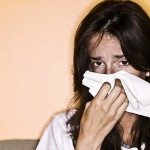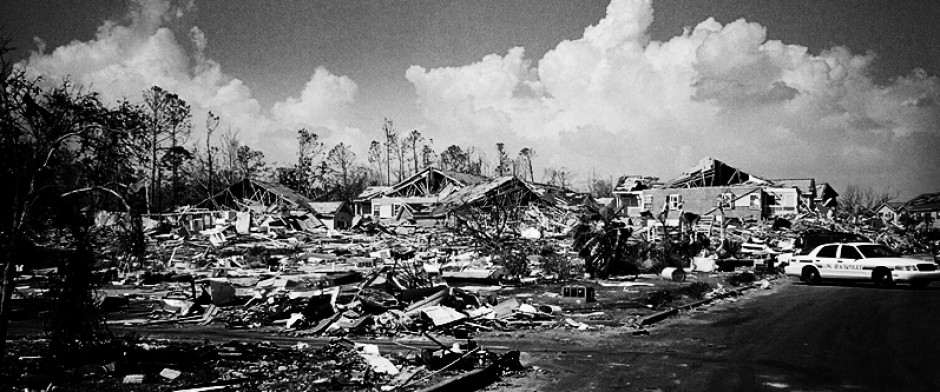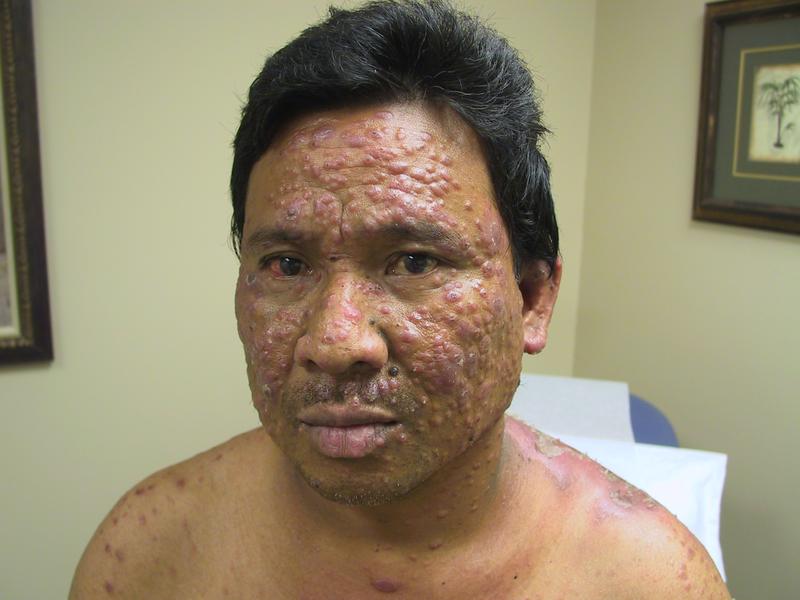A conversation with Americans that watch the news regularly would reveal they are aware and worried about terrorism and Ebola coming to the US. Their fears are not unfounded, but profoundly biased by sensationalized coverage that has been heavily edited by those with political motives. To illustrate this point, the threat of terrorists using a biological weapon in the US strikes fear into the heart of Americans, but outside of a small use of anthrax, this threat has never materialized. However, what if I told you literally tens of thousands of Americans have died and millions have been sickened by a deliberate biological attack. Wouldn’t that on-going attack generate far more fear, outrage, and a sense of urgency to act? You would think, but it hasn’t. In fact, as I write this post, millions of Americans have been sickened and or killed by a host of diseases that were once thought eradicated in the US. Further, new illnesses are spreading to the US that were either non-existent in the US or extremely rare. How could this be one should ask. The answer is simple. A deliberate government policy that ignores the safety and security of the American people, while undermining the nation’s sovereignty has been put in place and allowed to exist by both Republicans and Democrats vying for greater political power. Read more
Tag Archive for Disease
Ebola: When to Act
Recently, many of our readers have become very concerned about the on-going Ebola outbreak that has spread across West Africa. In particular, they want to know if this disease is something to worry about and when and how they should hit the bug out button. The answers to these questions now are relatively simple, but as this disease evolves, possible contingencies may arise where one must be prepared to take more drastic measures.
To begin, Ebola is a fatal communicable disease where up to around 90% of patients die. This particular strain does not appear to be as fatal, but has spread over a much broader region. There is no known cure and treatment is generally limited to providing pain management and fluids. The disease is transmitted by close contact with an infected person’s bodily fluids that include sweat, vomit, and most likely saliva. It does appear possible that the disease has some persistence and items contaminated with infected body fluids can transmit the disease until sterilized or disinfected. Also, the virus can be transmitted from an infected corpse after the person has died making burial and handling of bodies very risky. At this time though, the disease is not airborne and effective precautions can be taken to mitigate the spread. Nonetheless, to date, over 100 health care workers that did take “proper precautions” have become ill with the disease and most have since died. Further, it is important to note that a virus by its design mutates to survive. It is possible that in a worst case scenario, Ebola could mutate to be an airborne virus. This would constitute a biological worst case scenario that would quickly become a worldwide pandemic. Still though, for the virus to rapidly spread, it doesn’t require it to be airborne. In an area like West Africa where diseases are already endemic, understanding of the disease is poor, and hygiene and health care services are inadequate, the disease is now spreading like wildfire. In fact, since the virus has made its way out of the jungles and into the cities, Ebola escaped our best chance to contain the virus and is now exponentially spreading.
The Centers for Disease Control (CDC) has instructed the public not to worry and said that Ebola does not pose a threat to Americans. However, actions speak louder than words. The CDC declared a Level 1 health emergency, which is its highest threat level, making one wonder why the CDC would go on its highest state of alert if the public has “nothing to fear” as the government claims. Since then, a growing number of Americans are being tested for Ebola “symptoms,” but the government has not released the details of these possible cases even as the numbers grow. This leads one to conclude the government is trying to suppress the true danger of this disease to prevent panic all while hiding behind medical privacy. Further, other countries are taking Ebola very serious. Nigeria recently declared a state of emergency after at least five people in and around Lagos were confirmed to have Ebola and Sierra Leon and Liberia are deploying troops and closing borders. The World Health Organization has also declared the Ebola outbreak as out of control and declared it a health emergency. So, even if the CDC says not to worry, it is clear governments are very worried. In fact, when the government says stay calm and don’t panic, it is probably time to become worried.
Extremely worrisome is the fact it appears that the US government and CDC are trying to calm nerves with faux action designed more to prevent hurt feelings than to stop the spread of a deadly disease. Instead of closing down our borders and restricting travel to and from countries known to have active Ebola outbreaks, the US government announced it was only stepping up the screening of passengers for symptoms coming from countries in West Africa. Those that understand the disease should quickly realize the ridiculous ineffectiveness of this strategy. Specifically, the disease can take up to 21 days for a patient to become symptomatic after exposure to Ebola. Although a patient is only believed to be contagious while actively showing symptoms, the infected person could easily move through international airports around the world for weeks before any symptoms arise. This means individuals with Ebola could already be inside the US and easily pass through our ports of entry with the disease. Further, once here, it would likely be a number of days before an infected person sought medical help for their worsening symptoms that first present like any other bad flu. During this time, even one infected person could come into contact with thousands of other people and unknowingly infect many. As this disease spreads into the urban populations, it has the potential to quickly overwhelm medical facilities and fuel very real panic.
So to answer your questions, yes, Ebola is something you should worry about, but radical action at this time would be premature. I have read many articles that claim Ebola is being used to create panic and sell vaccines. These articles often seem to imply that because a pharmaceutical company may seek to profit off of this disease that somehow the disease is overblown or not a threat. This logic is plain stupid and although companies may indeed exploit this situation, it by no means mitigates the disease threat to you and your family. Ebola has not yet spread to the point that one should consider bugging out/in. However, after analyzing the spread of the disease in West African cities, it is clear the numbers of infected hit a critical tipping point approximately two weeks ago and is now exponentially spreading. As such, I predict with a high level of assurance that Ebola will begin to be confirmed in major cities around the globe over the next two weeks. As the cases are confirmed and patients are moved to quarantine in hospitals, a growing number of health care workers will contract Ebola. This will begin a cycle that could quickly strain the health care system if the disease is not contained within days from this post.
If Ebola breaks out in major cities around the world, as it now looks increasing likely, this is when you will need to start looking at a bug out/in option. Right now, if you have not done so, you should be stocking up on decontaminates like hydrogen peroxide and Clorox as well as medical grade masks, gloves, face shields, and gowns. These items will become nearly impossible to get once Ebola goes mainstream in major cities around the world. Note that these items alone will not protect you from Ebola contamination if you are in direct close contact with an infected patient, but they will give you some stand off and ability to decontaminate your own living spaces. For proper precautions against Ebola, one would need to be fully covered in duplicate full body suits and ideally have a totally contained suit with its own oxygen supply. Depending on how the outbreak develops, if it becomes clear hospitals in the US are receiving a growing number of Ebola patients, which almost definitely would correspond with a growing number of health care workers contracting the disease, it would be wise to go ahead and pull your kids from school and take a long term leave of absence from work. In short, this is when one should be ready to leave town.
My personal trip wire for bugging out parallels this logic, but is a tiered response. Specifically, as I monitor the disease outbreak, I initially self-segregate from others and highly populated areas as much as possible. This includes restricting my travel through major transportation hubs and completely avoiding large public gatherings. I also mandate constant hand washing and implement more severe disease mitigation strategies around my work and home. Further, I try to get what I can delivered to my house and do any residual necessary shopping when the fewest number of people are out, usually in the early morning or late evening. I also will not shake hands and forego any type of hugs or physical contact with others. If the disease spread worsens, I then close up shop and move all my operations to an offsite interim bug out location. This location is far safer, more secure, and requires only the most minimal contact with the outside, but one which is still in contact with my work, small town America, stores, and supplies if needed. If the disease outbreak moves to Middle America and continues to spread, I execute my full scale bug out contingency and lock down my retreat. Until the disease has a vaccine or burns itself out, I remain completely isolated from anyone that wasn’t a part of the initially quarantined group. This makes bugging in a poor choice for those located in urban areas where the disease spread will always be worse. If at all possible, remove yourself and your family/group to a remote bug out location and monitor the crisis safely from the radio, internet, and TV. Your guiding principles should be the sooner you leave the better and the fewer people you have contact with the safer. You also should not advertise your plans and destination, but rather use a viable cover story if necessary for work and school to explain the absence. Ultimately, each one of your situations is unique and will require a custom tailored response; however, always trust your good judgment and maintain a bias for action. Do not rely on the government to help you or to tell you when it is too late. Remember that when the government steps in, it will be because it is already too late and their mission is not to protect you, but rather, retain their control. This will almost certainly not work out well for you if your plan for survival relies on the government to save you so act now, the clock is ticking.
Stay safe and healthy,
Guiles Hendrik
August 8, 2014
All rights reserved.
Head of CDC Says It’s Time to Sound the Alarm on Antibiotic Resistant Superbugs

Last Minute Survival continues to track and follow the emerging threat of anti-biotic resistant strains of bacteria. For months now we have been monitoring this development, but it wasn’t until recently that the major media outlets have begun running the story. Just as LMS warned in previous articles http://www.lastminutesurvival.com/2013/02/27/emergence-of-extensively-drug-resistant-tuberculosis-threatens-to-turn-cities-into-deathtraps/, the danger of superbugs reaching the point of becoming untreatable will soon become a reality according to the Centers for Disease.
Thomas Frieden, director of the Centers for Disease Control and Prevention, said at a news conference: “It’s not often that our scientists come to me and say we have a very serious problem and we need to sound an alarm. But that’s exactly what we are doing today. Our strongest antibiotics don’t work, and patients are left with potentially untreatable infections.” The statement is indeed ominous given the authority of the source. Even worse, resistant bacteria “can spread the genes that destroy our last antibiotics to other bacteria, such as E. coli, and make E. coli resistant to antibiotics also,” according to Frieden.
Based on the facts provided by the CDC, you must begin to sound the alarm bells. The CDC’s director could not have been more frank in his statements about the dangers of resistant bacteria. In effect, these resistant “superbugs” will soon turn once easily treatable conditions such as a sinus infection, abscessed tooth, urinary tract infection, or bronchitis into an untreatable and often fatal condition. Many venereal diseases such as gonorrhea have already achieved near resistant status and now have the potential to become “incurable.” Further, resistant strains of diseases such as Tuberculosis have the potential to become global menaces and wipe out literally millions of people and make living in urban, densely populated centers suicide. This evolution in diseases has already begun to affect and kill Americans. Soon, within our lifetimes, it will grow in seriousness to the degree that quarantine will again be necessary, mass transit will need to screen for illnesses and not terrorists, and simple infections will once again rob millions of life.
LMS analysts have spoken to various health care providers and assess the current risk as moderate within the United States. However, if one deals regularly with individuals on “skid row” such as homeless, immigrants, or works in hospitals, the potential to acquire a resistant strain of a superbug dramatically increases. Further, if you travel outside of the United States and have close contact with individuals in developing nations experiencing high rates of resistant bacterial diseases such as Tuberculosis, you should speak with a doctor and to take appropriate steps to protect yourself. As the threat from resistant diseases increase, one can protect themselves by practicing good hygiene to include vigorous and regular hand washing, safe sex, and a general avoidance of high risk groups. To provide your family the best long term protection, it may be necessary to eventually move out of any densely populated areas; especially those areas with large immigrant populations. Note, it is not the intent of this article to spread xenophobic rhetoric, but to inform. In respect to this, the primary breeding ground for resistant bacteria is outside of the United States. Therefore, one of the primary vectors of these diseases entering the United States is by person to person contact and transfer.
By Guiles Hendrik
Emergence of Extensively Drug-Resistant Tuberculosis Threatens to turn Cities into Deathtraps
America’s densely populated urban areas may soon become lethal breading grounds for the rapid transmission of deadly diseases once easily treated and nearly eradicated in the West. Some of the most dangerous reemerging diseases to appear in the US are antibiotic resistant strains of tuberculosis. To date, the worst of these is Extensively Drug-Resistant Tuberculosis or (XDR-TB). XDR-TB is an extremely deadly form of tuberculosis caused by bacteria that are resistant to even the most effective anti-TB drugs. XDR-TB outbreaks have been showing up in a growing number of countries, to include most recently, South Africa. XDR-TB in particular has the potential not only to quickly kill, even with aggressive and expensive long-term treatment, but could mutate further into a totally drug-resistant super disease capable of killing tens of millions of people. Readers should remain vigilant, learn how to mitigate TB risks, and have a plan for reacting to outbreaks if you must live in an urban environment.
The United States could become ground zero for this reemerging epidemic very soon. Los Angeles has just reported an outbreak of drug-resistant tuberculosis [http://losangeles.cbslocal.com/2013/02/21/thousands-may-have-been-exposed-to-deadly-tb-epidemic-downtown/] amongst the city’s poor and homeless. If XDR-TB gets into the general population of cities like Los Angeles, state agencies and medical facilities would be overwhelmed. Further, the manner of XDR-TB transmission would make normal day to day activities in cities where close proximity is the norm a lethal gamble. As XDR-TB and other drug resistant diseases continue to spread and mutate, it is only a short matter of time before America’s cities are death traps.
The first key to protecting yourself and your family is that it is important to know the facts. TB infects one in three people in the world. However, it is only when the bacterium becomes active do people become ill with TB allowing the disease to be unknowingly transported and spread. Typically, a TB bacterium becomes active when a person’s immunity is compromised by an illness such as HIV, advanced age, or medical conditions. Tuberculosis is one of the world’s deadliest diseases. In 2011, nearly 9 million people around the world became sick with TB disease and about 1.4 million infected died. Further, TB is a leading killer of people who are HIV infected. A total of 10,528 TB cases (a rate of 3.4 cases per 100,000 persons) were reported in the United States in 2011.
The general symptoms of TB disease include feelings of sickness or weakness, weight loss, fever, and night sweats. The symptoms of TB disease of the lungs may also include coughing, chest pain, and coughing up blood. Symptoms of TB disease in other parts of the body depend on the area affected. If you have these symptoms, you should contact your doctor or local health department.
Typically, TB can be treated with a course of four standard, or first-line, anti-TB drugs, but these are becoming more and more ineffective. This is the result of drugs being misused or mismanaged, often in the third world, causing multidrug-resistant TB (MDR-TB) to develop. MDR-TB takes longer to treat with second-line drugs, which are more expensive and have more side-effects. XDR-TB can develop when these second-line drugs are also misused or mismanaged and therefore also become ineffective.
XDR-TB, like other forms of TB is spread through the air. When a person with infectious TB coughs, sneezes, talks or spits, they propel TB germs, known as bacilli, into the air. This makes TB extremely dangerous in densely populated areas because a person needs only to inhale a small number of these to be infected. In fact, an outbreak of XDR-TB could potentially paralyze a city.
Treatment for MDR-TB and for XDR-TB are basically the same, but require the use of second-line drugs that are significantly more toxic than typical drugs used to treat normal TB. In fact, both types of resistant TB Infection will require extensive chemotherapy for up to two years. This toxic and aggressive treatment can cause a range of serious side-effects including hepatitis, depression and hallucinations. Patients are often hospitalized for long periods, in isolation and sometimes cannot tolerate the treatment resulting in a fatal TB infection. Further, it is critical to note that treating resistant TB is extremely expensive and could overwhelm health services. Specifically, second-line drugs are extremely expensive (up to 200 times higher than standard treatment drugs) and treatment often requires long term hospital inpatient care. If a large percentage of the population becomes infected with TB, hospitals simply would not have the bed space and insurance companies would go broke trying to pay for the treatments.
To protect yourself and your family, avoid close contact or prolonged time with known TB patients or people in general in crowded, enclosed environments like clinics, hospitals, prisons, or homeless shelters. If TB outbreaks become more common in your area, wearing a protective surgical mask and washing hands frequently will offer some protection. Also, limit travel to countries where TB is prevalent and make sure you get a TB test upon return. Further, avoid contact when possible with illegal immigrant populations as they are more prone to be infected with TB. Note, persons applying to enter the US with immigrant or refugee visas must complete a questionnaire about any symptoms of TB they may have and obtain a chest radiograph. If positive, the person submits sputum specimens for examination for TB bacteria. Persons identified as having infectious TB are not granted entry to the United States, until they have been treated. However, illegal immigrants by-pass this critical health barrier and regularly reintroduce a host of diseases once eradicated in the US. Considering the above, one’s best protection is to remain vigilant and avoid close contact with high risk populations.
By: Guiles Hendrik
Supporting Links:
http://www.who.int/mediacentre/news/releases/2010/drug_resistant_tb_20100318/en/index.html
http://www.cdc.gov/tb/publications/factsheets/treatment/drugresistanttreatment.htm
http://en.wikipedia.org/wiki/Extensively_drug-resistant_tuberculosis



